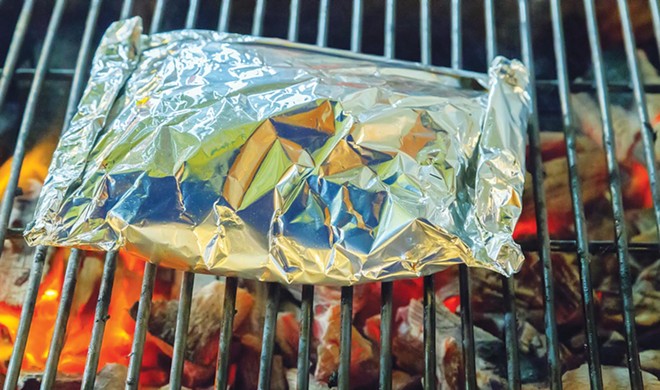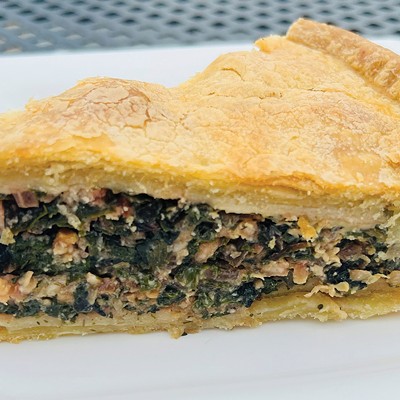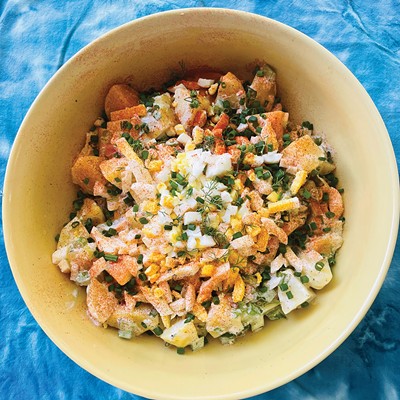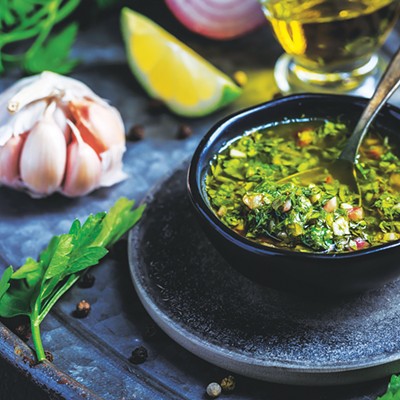I'm not sure why I love camping so much. It's quite an effort, especially when kids are involved. Yet each year when the frenetic pace of summer relaxes into the steady amble of autumn, I simply cannot wait to make the lists and haul out the gear and prep the food and get outside for the weekend. At some point I'll wonder why I'm doing all of this and grumble that it takes a lot of work to recreate, but once we're set up, the magic of the woods takes over and it all seems worth it.
While the magic is real, so is the preparation and planning required to cast its spell. My camp cooking has shifted over the years from luxe grilled salmon for two to more family-friendly and budget-friendly meals that require little more than pulling packets out of the cooler and heating them on the grill. This method involves a lot of foil and some work on the front end, but the result is worth it. Beyond camping, this foil-wrapped kind of meal prep is useful at home too, whether you're getting a jump on the week ahead or entertaining guests.
Use heavy-duty foil when preparing these recipes; regular foil will tear too easily. All these recipes should be cooked over a medium fire, which can be gauged by holding your hand about five inches over the grill grate (about the height of a soda can). If you pull your hand away in two to four seconds, the heat is high; if you can hold your hand for five to seven seconds, the heat is medium.
Campfire French toast
3 cups day-old French bread, cut into cubes
4 eggs
½ cup half and half
¼ cup maple syrup (plus more for serving)
½ teaspoon cinnamon
A pinch of salt
2 tablespoons butter
½ cup berries or chopped nuts, optional
At home, place the cubed bread in a gallon zip-top bag.
Combine the eggs, milk, syrup, cinnamon and salt and mix well. Transfer to a pint jar to pack in the cooler. (This mixture can be frozen.)
At the campsite, add the egg mixture to the bread cubes in the bag, mix gently and set aside for a few minutes. Roll out a piece of aluminum foil about 16 inches long and spread it with one tablespoon of the butter, leaving a one-inch border around the edge of the foil. Repeat this with a second piece.
Dump the bread mixture onto the first piece of foil and spread it over the buttered area. Place the second piece of foil buttered side down over the bread mixture and crimp the edges to seal. Place the packet over a medium fire and cook for 8 to 10 minutes, flipping once and cooking another 8 minutes. Let cool for 5 minutes before carefully opening.
Make-ahead breakfast sandwiches
10 eggs
¾ cup half and half
Salt and pepper to taste
2 tablespoons melted butter
6 English muffins
6 slices bacon or ham (optional)
6 slices cheese, preferably American
Preheat the oven to 350 degrees and lightly spray a 9x13 glass baking dish with cooking spray. Beat together the eggs and cream and add a pinch of salt and black pepper to taste. Bake the eggs in a preheated oven for about 30 minutes until the eggs are slightly puffed and barely jiggly. Set aside to cool.
While the eggs are baking, brush each half of the English muffins with melted butter and place on a baking sheet. When the eggs come out of the oven, raise the oven heat to 375 degrees. Transfer the muffins to the oven and bake until lightly toasted. Remove from the oven and let cool.
Use a biscuit cutter or glass to cut six rounds of egg. Line up the muffin bottoms and place half a slice of cheese, a circle of egg, a slice of bacon or ham, if using, and another half slice of cheese on each before placing on the buttered tops. Wrap each sandwich in a square of heavy-duty foil. Refrigerate for up to 3 days or freeze in a zip-top bag and store up to one month.
The sandwiches can be reheated in the microwave from frozen (remove the foil and wrap in a paper towel) on full power for about one minute. To reheat in an oven or campfire, allow sandwiches to thaw first before baking in a 375-degree oven for 8 to 10 minutes, or by placing over a medium campfire for about three to four minutes per side.
Campfire shrimp and sausage jambalaya
8 ounces andouille or smoked sausage, sliced into half moons
½ cup each chopped onion and green bell pepper
3 cloves minced garlic
3 cups cooked brown rice, cold
1 14.5-ounce can fire-roasted tomatoes
½ teaspoon each granulated onion and garlic
1 teaspoon each dried Italian herb blend and paprika
Salt, black pepper and cayenne to taste
1 pound small raw shrimp, peeled and deveined
Soft butter, for greasing foil
At home, sauté the sausage in a skillet over medium-high heat until lightly browned, then transfer to a mixing bowl. Add the diced vegetables and garlic and sauté until fragrant and slightly softened, then add to the sausage in the mixing bowl. Set aside and allow to come to room temperature. When cool, add the cold cooked rice, tomatoes and seasonings. Taste and adjust salt and pepper as needed. Add the shrimp and mix well.
Butter the middle of a 12-inch by 18-inch piece of heavy-duty foil, leaving a 2-inch border around the edge. Place a quarter of the rice in the center of the foil then bring up the sides and double-fold the top and ends to create a packet, making sure to leave some room for heat to circulate. Place in a zip-top bag for secure storage in the ice chest and cook within 1-2 days.
Place on a medium-hot campfire and cook for 5-6 minutes per side, turning once, until the shrimp are cooked through. If you open it and the shrimp are not yet pink, rewrap the packet and return to the grill for a few minutes more.


















